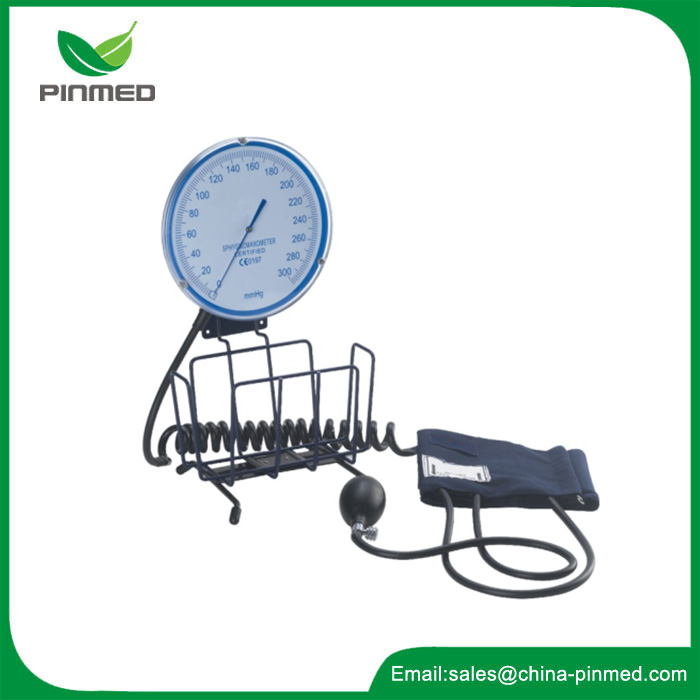Detailed Overview of Desk Type Aneroid Sphygmomanometer
2024-07-30
A desk-type aneroid sphygmomanometer is a medical device used to measure blood pressure. Unlike digital models, an aneroid sphygmomanometer uses a mechanical dial and a cuff to measure blood pressure, relying on a traditional, manual method. Here's an overview of its features, benefits, and considerations:
Key Features:
1. Design:
- Desk Type: Typically designed to be placed on a desk or table, making it stationary and easy to use in a clinical or office setting.
- Dial Gauge: Features a large, easy-to-read dial gauge that displays blood pressure readings.
2. Measurement Mechanism:
- Aneroid Pressure Gauge: Uses a metal spring and dial mechanism to measure the pressure in the cuff, rather than electronic sensors.
- Inflation and Deflation: Inflation is usually done manually using a hand pump, and deflation is controlled by a release valve.
3. Cuff:
- Adjustable Cuff: Comes with an adjustable cuff that wraps around the patient’s upper arm. The size and fit of the cuff are crucial for accurate measurements.
- Material: Typically made from durable, easy-to-clean materials.
4. Stethoscope (optional):
- Integrated or Separate: Some models include a built-in stethoscope for listening to heartbeats and blood flow sounds, while others may be used in conjunction with a separate stethoscope.
5. Accuracy:
- Manual Calibration: Provides accurate readings when properly calibrated and used according to instructions.
- Precision: Mechanical gauges are known for their precision and reliability if maintained properly.
Benefits:
1. Accuracy:
- Reliable Measurements: Provides accurate and reliable blood pressure readings when used correctly.
- Manual Operation: Offers precise control over inflation and deflation, allowing for detailed assessment.
2. Durability:
- Robust Construction: Often made from high-quality, durable materials that withstand regular use in medical settings.
- Long-Lasting: Mechanical components can have a long service life with proper maintenance.
3. Ease of Use:
- Simple Operation: Easy to use with a straightforward manual inflation system.
- Visual Display: Large dial is easy to read and interpret.
4. Cost-Effective:
- Affordable: Generally less expensive than digital models and does not require batteries or electronic components.
Applications:
1. Clinical Settings:
- Medical Offices: Commonly used by doctors and nurses for routine blood pressure checks.
- Hospitals: Used in hospitals for accurate blood pressure measurement.
2. Home Use:
- Patient Monitoring: Suitable for individuals who need regular blood pressure monitoring at home, especially when paired with a stethoscope.
3. Training and Education:
- Medical Training: Used in medical training and education to teach proper blood pressure measurement techniques.
Considerations:
1. Calibration:
- Regular Calibration: Needs periodic calibration to maintain accuracy. Ensure the device is checked and calibrated by a professional regularly.
2. Technique:
- Proper Use: Accurate measurements depend on proper technique, including correct cuff placement and inflation.
- Skill Required: Manual operation requires skill and practice to achieve precise readings.
3. Maintenance:
- Cleaning: Regular cleaning and maintenance are necessary to keep the device in good working condition.
- Storage: Store the device properly to avoid damage and ensure longevity.
4. Cuff Size:
- Fit: Ensure the cuff size is appropriate for the patient’s arm size to obtain accurate readings. Cuffs are available in various sizes.
A desk-type aneroid sphygmomanometer is a valuable tool for accurate blood pressure measurement, offering reliability and durability in clinical settings and beyond. Proper use and maintenance are key to ensuring its effectiveness and longevity.



